Home » 2019
Yearly Archives: 2019
Oligo-Miocene evolution of the Paratethyan branches
A comparison of the stratigraphic record between two different branches of the Tethys is attempted for the first time. This study concerns the main Oligocene-Miocene tectono-sedimentary events in the Cenozoic units of the Moldavidian Basin (Romanian Eastern Carpathians) and the Maghrebian Flysch Basin (Maghrebian Chain and its lateral extension in the Betic and Southern Apennine Chains). Both basins are characterized by three main general Oligo-Miocene successions (internal, mixed, and external) corresponding to three subdomains controlled by the geological evolution of opposite plate (or microplate) margins and affected by a similar tectonic evolution. The successions of the three subdomains of the two basins show very similar features regarding stratigraphic records (lithofacies and petrofacies associations, unconformities, marker-levels, age), and the space-time sediment supply diversification (i.e., immature and super-mature arenites coming from opposite margins). Furthermore, pre-, syn- and post-orogenic successions have been identified in the geological reconstructions of both basins. The tectonic control on depositional processes (i.e., a large amount of siliciclastic supply confined in restricted time ranges, widespread volcaniclastites linked to acid-intermediate penecontemporaneous volcanic activity), and the appearance of indicators of syn-sedimentary tectonic activity (turbidites, slumps, and olistostromes) result in correlable events related to deformation phases that in turn are indicative of a similar evolution. Also, the basinal evolutionary stages (i.e., beginning of terrigenous supply, thrust-top basin formation and gravitational sliding, molassic and/or intramontane sedimentary cycles), the timing of deformation phases (drifting, foredeep), and geotectonic events (from extension to compression and post-orogenic deformation) seem to be similar. All results are encompassed in an evolutionary geodynamic model considered in the context of the Africa-Europe convergence where intermediate microplates are involved. This complex framework implies a progressive reorientation of convergence direction of these microplates that occurs during similar geodynamic events leading to the closure of the western Tethys Ocean and its related late-Alpine branches. This comparative approach, if applied to similar evolutionary phases of other mountain chains, can be useful for different geological contexts of other orogenic belts, especially to check the major general geological constraints for their evolution.
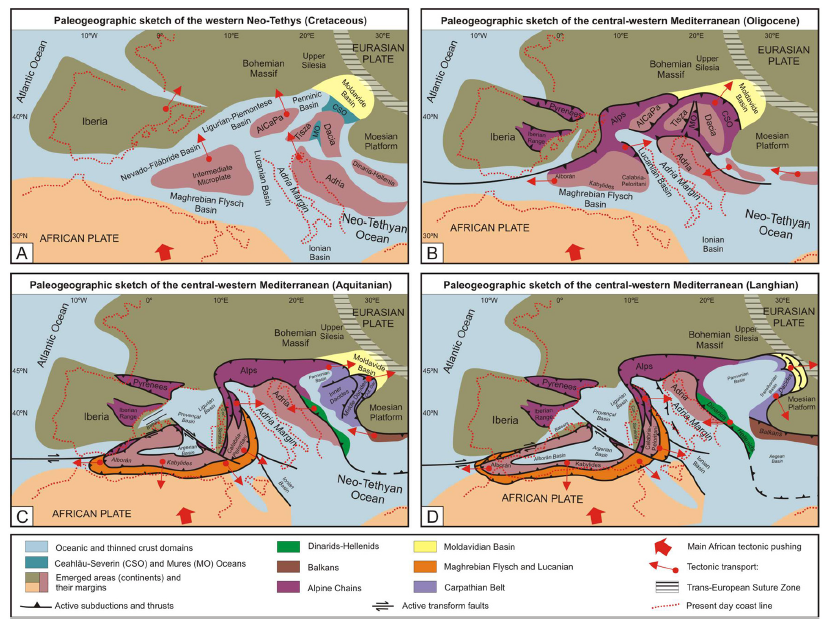
New model for the Betic Flysch Basin
The Flysch Complex extends, with equivalent stratigraphic and tectonic features, from the Betic Cordillera to the Rif, Argelian and Tunisian Tells, Sicily, Calabria and the southern-central Apennines. In the Betic Chain, it extends from the Campo de Gibraltar to the Vélez Rubio-Lorca region. This complex is a thrust-and-fold system (when structurally organised) or a tectonosedimentary mélange (when showing a rather chaotic structure). In the western Betic Cordillera, the Campo de Gibraltar Flysch Complex widely overthrusts the External Zones and, in turn, the Alborán Domain (Frontal Units in particular) thrusts onto it.
The Flysch Complex is mainly made of Lower Cretaceous to lower Burdigalian turbiditic siliciclastic (and subordinately carbonatic) sandstones interlayered with varicoloured clays. Since the latest Oligocene the successions show synorogenic character.
The Cretaceous successions of the Alborán (internal domain in the figure) domain record the post-rift evolution of the proximal to distal parts of a divergent Tethyan paleomargin, while those of the Campo de Gibraltar Flysch Complex record the evolution of the oceanic basin. The Alborán and the Campo de Gibraltar Flysch Complex domains were later transformed into a convergent continental margin (Oligocene to Early Miocene) that later evolved to a collisional setting (Middle to Late Miocene).
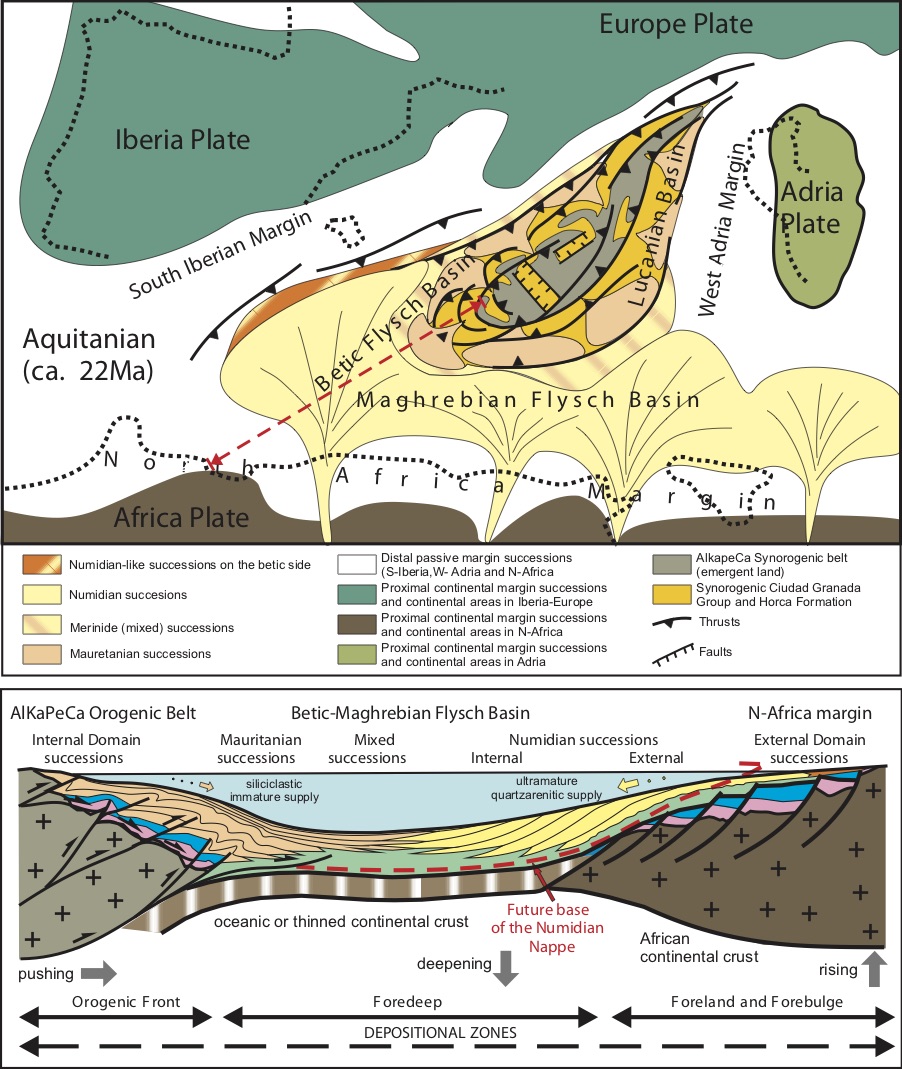
Jimenez de Cisneros exhibition at Crevillent
In the Crevillent town takes place an exhibition on the geologist Daniel Jimenez de Cisneros celebrating the 100 years of the publication of the first geological study of the Crevillent Sierra.
The University of Alicante has been collaborating in the exhibit 15-years after the 2004-tribute-simposium to Don Daniel Jimenez de Cisneros. The link bellow show two videos made for the event.
Catoon trailer:
link to the facsimil-book published:
shallow water stratified simulation
The computational simulation of shallow stratified fluids is a very active research topic because these types of systems are very common in a variety of natural environments. The simulation of such systems can be modeled using multilayer shallow-water equations but do impose important computational requirements, especially when applied to large domains.
General Purpose Computing on Graphics Processing Units (GPGPU) has become a vivid research field due to the arrival of massively parallel hardware platforms (based on graphics cards) and adequate programming frameworks which have allowed important speed-up factors with respect to not only sequential but also parallel CPU based simulation systems.
In this work we present simulation of shallow stratified fluids with an arbitrary number of layers using GPUs. The designed system does fully adapt to the many-core architecture of modern GPUs and several experiments have been carried out to illustrate its scalability and behavior on different GPU models. We propose a new multilayer computational scheme for an underlying 2D mathematical model. This scheme is capable of handling an arbitrary number of layers. The system adds no overhead when used for two-layer scenarios, compared to an existing 2D system specifically designed for just two layers.

The GPU computes the evolution in time of the interfaces between several layered fluid types (for a given initial configuration) and displays those interfaces as solid surfaces, as soon as the output from each computing step is available. The user can rotate the view interactively, so he can better observe the layers’ evolution.
Here you can view two screen-shots taken from the simulation program while running. First one the initial layers configuration is shown.
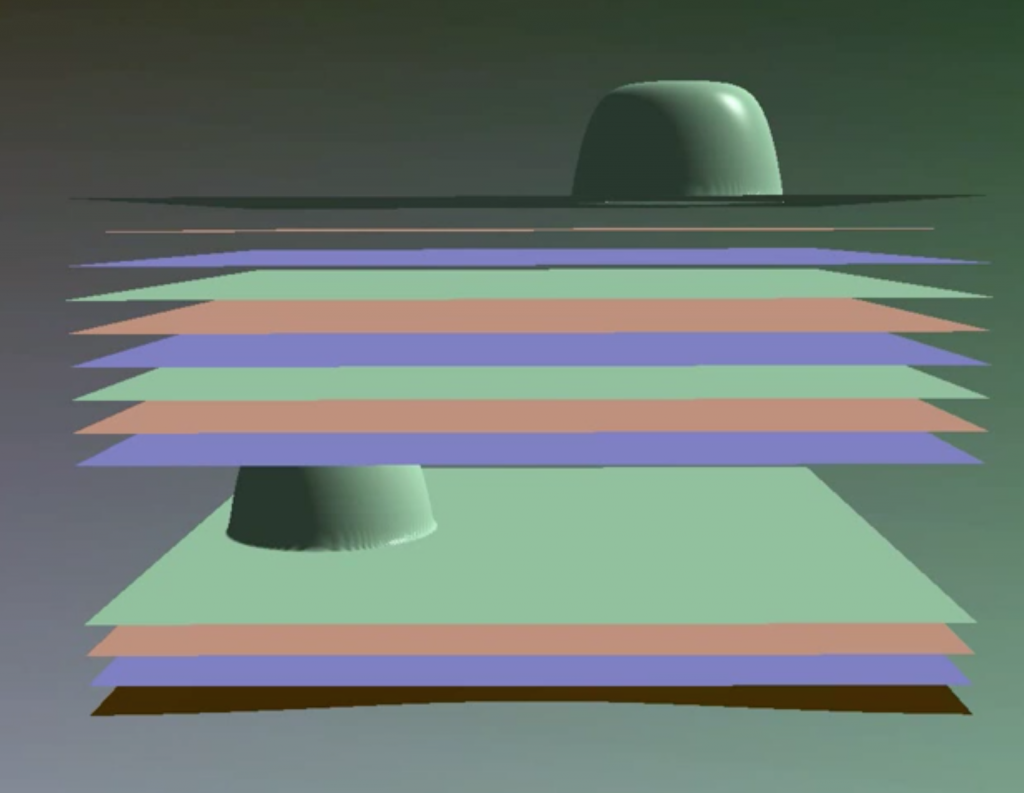
Then It is shown the resulting layers configuration after the simulation has been running for some time.

These screen captured videos (see links below) show the simulation program running in real-time, for various scenerarios. You can observe how the user is able to manipulate the view:
https://youtu.be/U3DzJ1yPIZ8
https://youtu.be/1Y01dHevmWg
https://youtu.be/AQmNz53yL8U
https://youtu.be/Q61epORRHVw
https://youtu.be/x58c-VTGj_0
https://youtu.be/b5tM6TnZRXA
Field trip to Granada
Students of the third course of Geology of the Alicante University within the subject of Mapping 2: visit Benalúa in the Guadix basin.
The visit took place from October 23th until 26th of 2019 and the professor in charge was Manuel Martín-Martín.
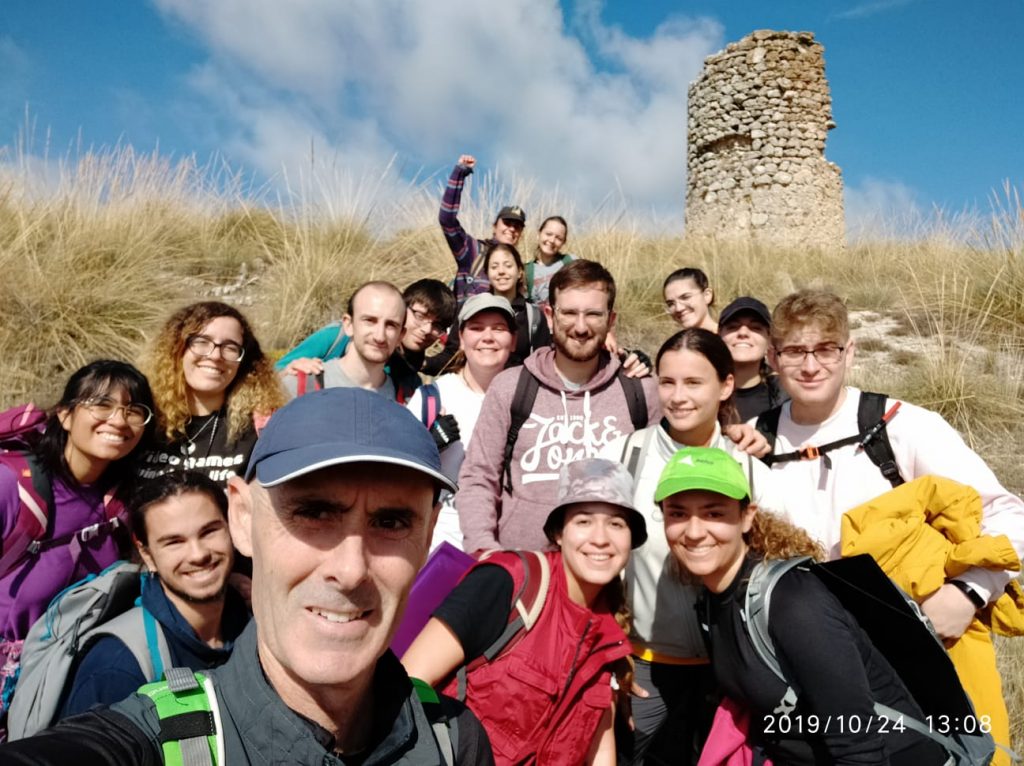
Regional geology field trip to Teruel
Students of the third course of Geology of the Alicante University within the subject of Regional Geology: visit Jarafuel triassic section, Aguaton jurassic section, Murero paleontological site, Fombuena section, Santa Cruz Paleozoic Seas Museum, Ojos Negros Mine, and Orea-Checa road Hirnatian section.
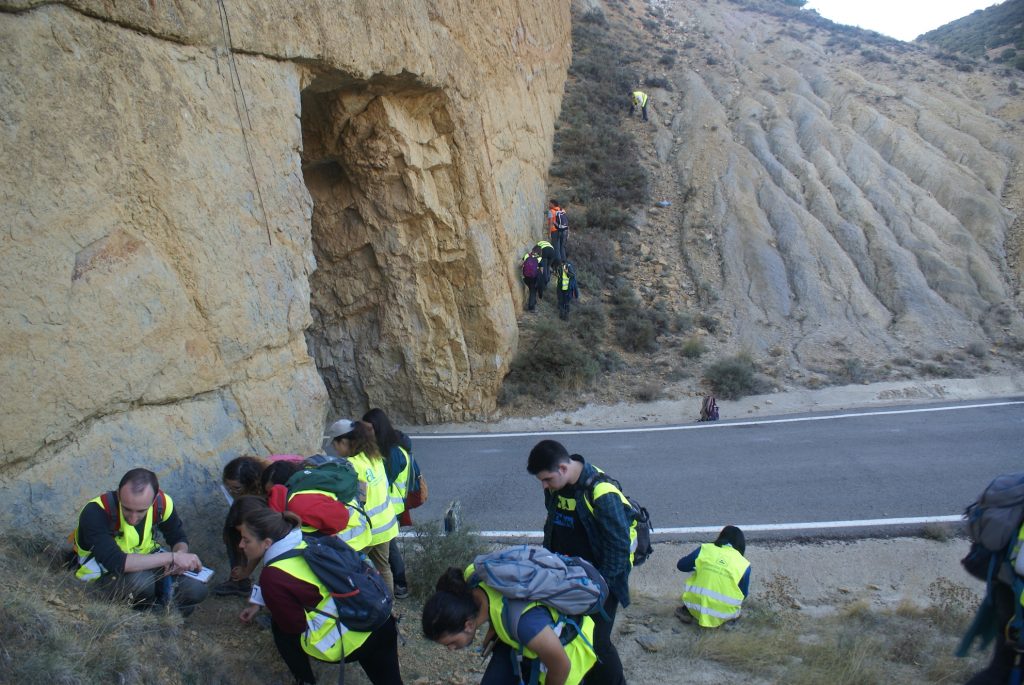
The visit took place from 16 to 19 October of 2019 and the professors in charge were Juan Alberto Pérez-Valera and José Enrique Tent-Manclús.
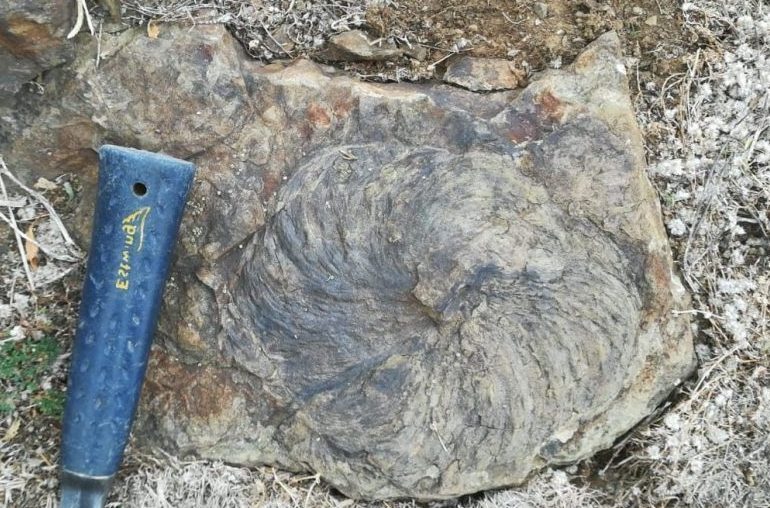
Tectonic breakup in the Eastern Betic zone
Six Paleogene-Aquitanian successions have been reconstructed in the Alicante area (eastern External Betic Zone). The lithofacies association evidences “catastrophic” syn-sedimentary tectonic processes consisting of slumps, mega-olisthostromes, “pillow-beds” and turbiditic deposits (Figure 1).
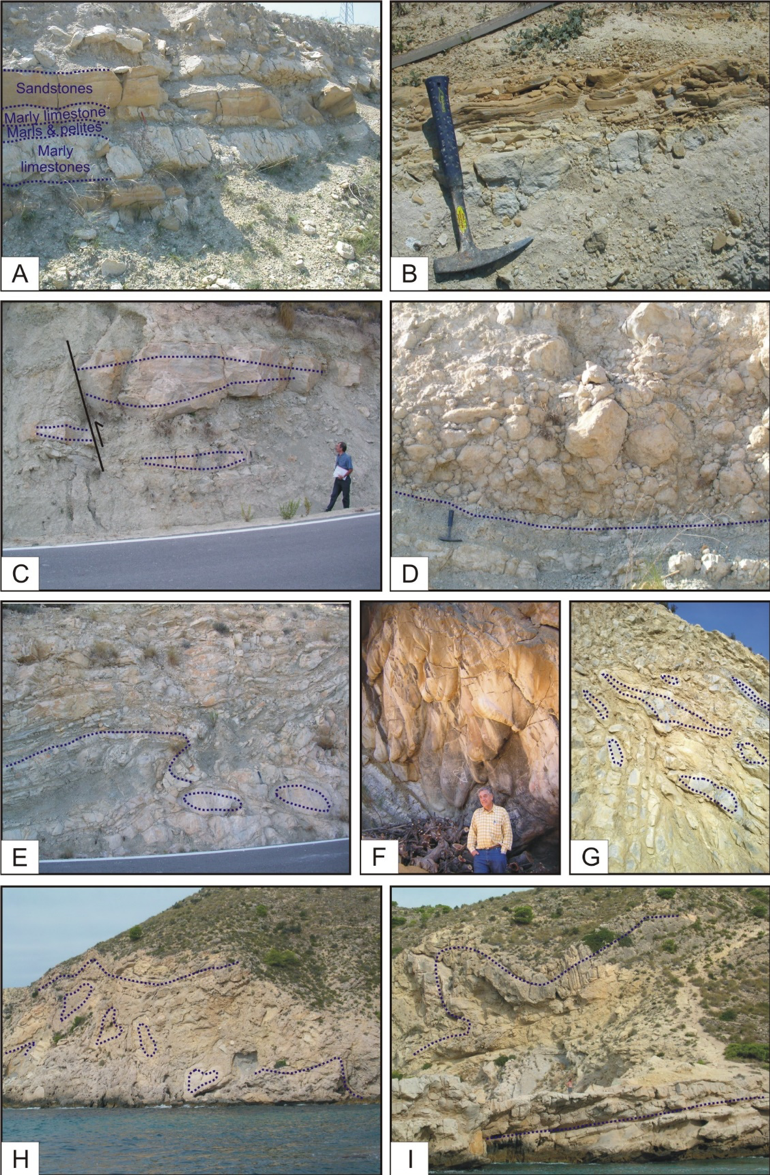
This kind of sedimentation is related to unconformity surfaces delimiting sequence and para-sequence cycles in the stratigraphic record (Figure 2).
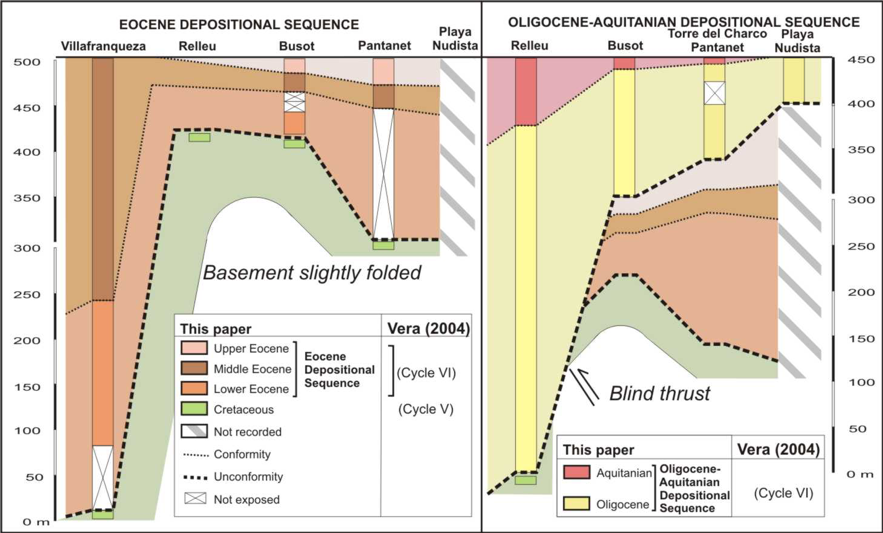
The data compiled have enabled the reconstruction of the Paleogene-Aquitanian paleogeographic and geodynamic evolution of this sector of the External Betics. During the Eocene the sedimentary basin is interpreted as a narrow trough affected by (growth) folding related to blind thrust faulting with a source area from the north-western margin, while the southeastern margin remained inactive. During the Oligocene-Aquitanian, the sourcing margin became the southeastern margin of the basin affected by a catastrophic tectonic (Figure 3).
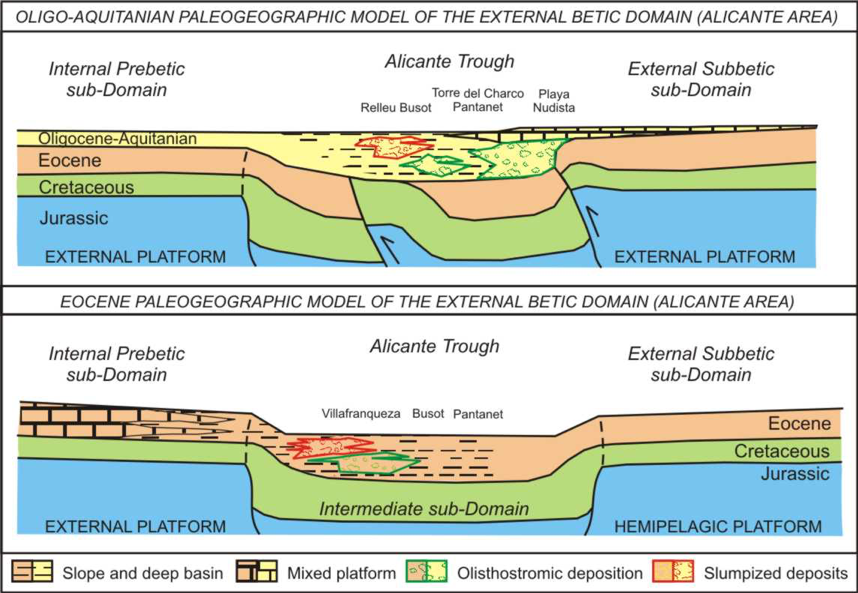
The activity of the margins is identified from specific sediment sources area for the platform-slope-troughsystem and from tectofacies analysis. The southeastern South Iberian Margin is thought to be closer to the Internal Betic Zone, which was tectonically pushing towards the South Iberian Margin. This pushing could generate a lateral progressive elimination of subbetic paleogeographic domains in the eastern Betics (Figure 4).

This geodynamic frame could explain the development of such “catastrophic” tectono-sedimentary processes during the Late Oligocene-Early Miocene.
Nearshore Mid-Triassic Zoophycos
Zoophycos is a well-known trace fossil common throughout the Phanerozoic. Paleozoic forms show important differences in morphology and habitat distribution with respect to the Jurassic, Cretaceous, and Cenozoic ones. Therefore, Early–Middle Triassic is considered a crucial time-span for the understanding of the evolution of this trace fossil. So far, Early Triassic Zoophycos is unknown and Middle Triassic forms were recorded only in deposits from Thuringia. The morphology and paleoenvironment of Zoophycos from the middle–upper Muschelkalk of the Iberian Range is herein described.
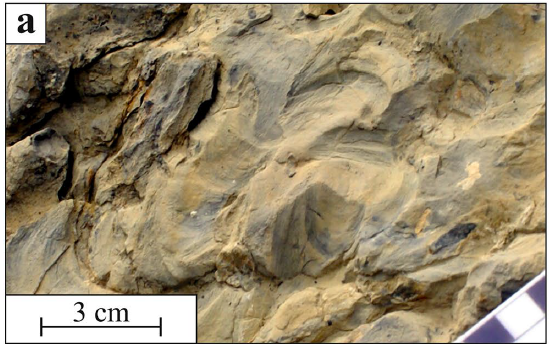
The best-preserved trace fossils occur in a dolomicritic bed Ladinian in age, and are represented by small forms with a subcircular, slightly lobed outline and very little penetration depth. They were deposited in a very shallow, quiet-water environment with transition to supratidal/emerged areas. The low diversity of both trace fossils and skeletal remains point to stressful conditions related to strong salinity variations and/or poor water circulation. A comparison was made with Zoophycos from Anisian deposits of the Muschelkalk in Germany. This showed that both forms are quite simple and penetrate only the shallowest tiers, although they are different in whorl outline and lobe shape.
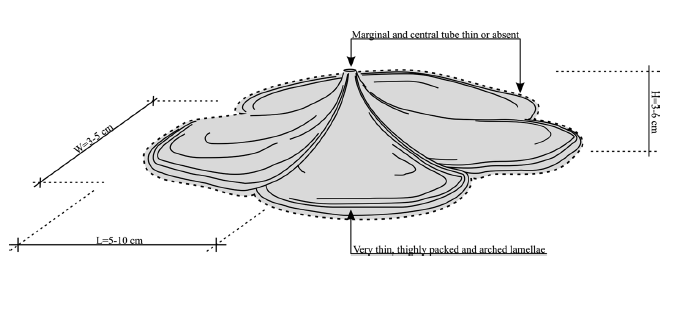
This confirms that, notwithstanding the morphological variability of this group, Zoophycos still maintained a quite simple structure in the Triassic. A shallow-water environment was deduced for both localities, confirming that at least until the Early Jurassic Zoophycos had not definitively migrated toward deep-water areas.
Cite as: Giannetti, A., Tent-Manclús, J. E. y Baeza-Carratalá, J. F. (2017): New evidence of nearshore Mid-Triassic Zoophycos: morphological and paleoenvironmental characterization. Facies, 63,16: 1-12. DOI : 10.1007/s10347-017-0498-8
Jiménez de Cisneros course field trip to the Crevillente Sierra
The field trip of the he summer school course of the University Miguel Hernandez entitled “Jimenez de Cisneros, pioneer in the geological and paleontological investigation in the Southern Alicante” took place on september 5th, 2019.
The participants visit the Los Molinos educative center and then waked along the dirt road to the Pouet de la Mel spring.
The fist photography show the conductor of this field trip will be our collegue José Enrique Tent-Manclús teaching the finimessinian transgressive surface on the background of the picture.
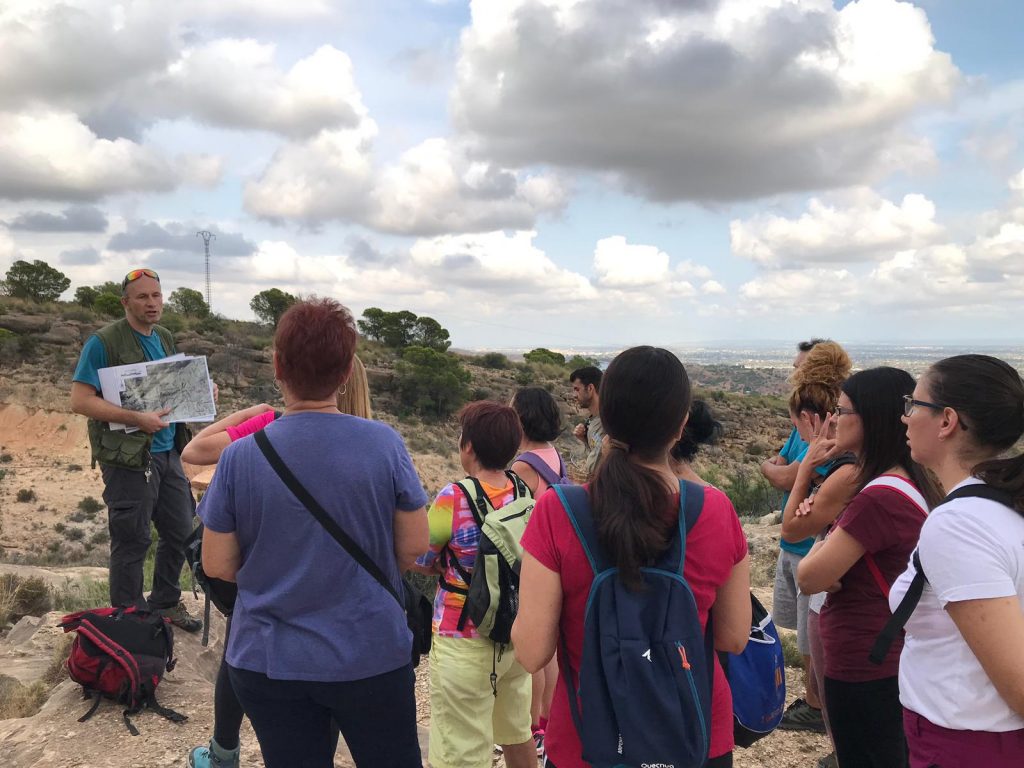
The second fotography show the all participants in the field trip near the Pouet the la Mel spring with the Sierra de Crevillente Jurassic at the back.
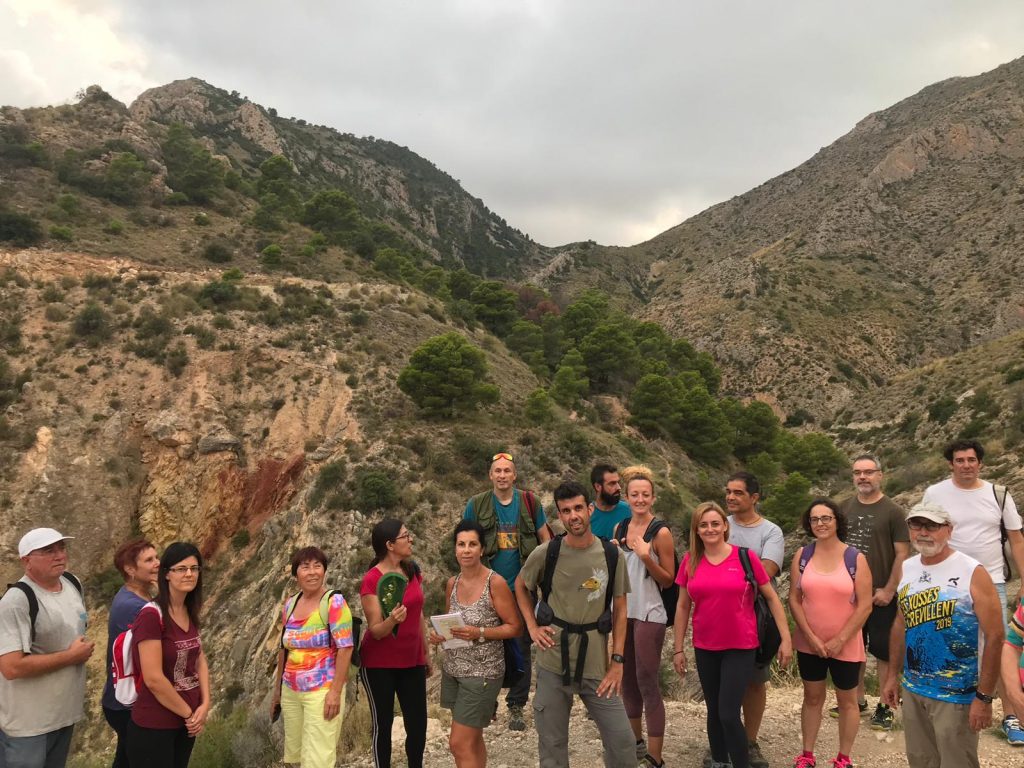
More information about the Crevillente course here.
Tethyan to Mediterranean Evolution
Message from the Guest Editor
Dear Colleagues,
Several geological modeling studies on the geodynamic and paleogeographic Alpine (Eo-Alpine during the Cretaceous–Paleogene; Neo-Alpine during the Oligocene– Miocene) evolution of the Mediterranean have been published without consensus in the last four decades. Therefore, a Special Issue dedicated to “Tethayan to Mediterranean evolution” seems justified. Studies that consider the geodynamic and/or paleogeographic evolution of the entire Mediterranean area or a part of this area will be welcome. The proposal can be focused on stratigraphic, sedimentological, petrographic, or tectonic data, or geophysical interpretations and reconstructions based on principles of Plate Tectonics using GPlates or similar software. The papers that are published in this Special Issue can contribute to clarifying and updating the state of our knowledge about this controversial theme.
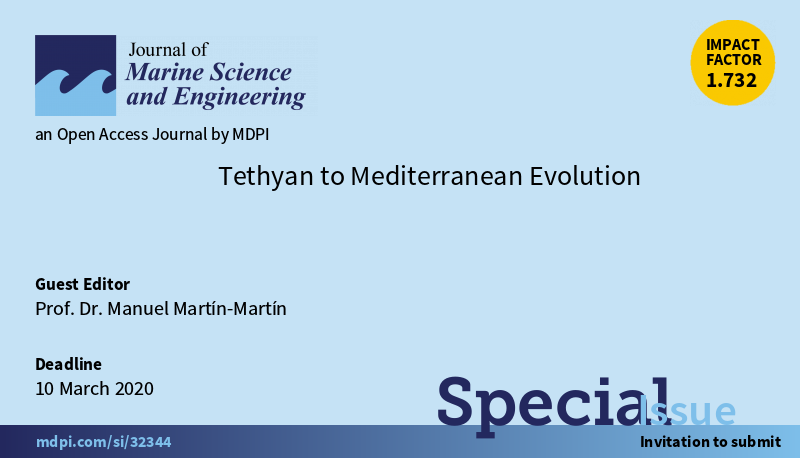
Message from the Editorial Board
T h e Journal of Marine Science and Engineering (JMSE; ISSN 2077-1312) is an international peer-reviewed open access journal which provides an advanced forum for studies related to marine science and engineering. The journal aims to provide scholarly research on a range of topics, including ocean engineering, chemical oceanography, physical oceanography, marine biology and marine geosciences. We invite you to publish in our journal sharing your important research findings with the global ocean community.
Open Access: free for readers, with article processing charges (APC) paid by authors or their institutions.
High visibility: Indexed in the Science Citation Index Expanded in Web of Science, in Inspec (IET) and in Scopus.
CiteScore (2018 Scopus data): 1.76, which equals rank 30/92 in ‘Ocean Engineering’, rank 105/288 in ‘Civil and Structural Engineering’ and rank 77/203 in ‘Water Science and Technology’.
Guest Editor:
Prof. Dr. Manuel Martín-Martín
Earth sciences and environment
Department (University of Alicante). Campus Universitario del San Vicente del Raspeig, AP- 99, 03080 Alicante, Spain
manuel.martin.m3@gmail.com
Deadline for manuscript submissions:
10 March 2020
Recent Comments